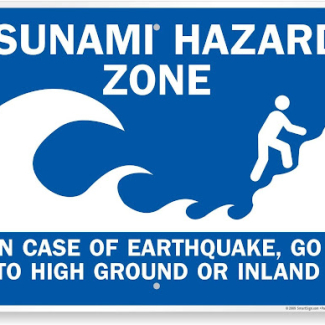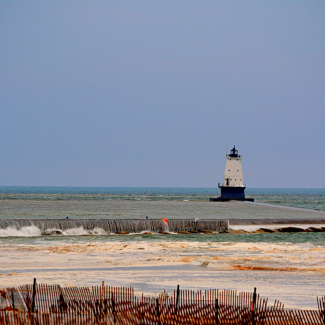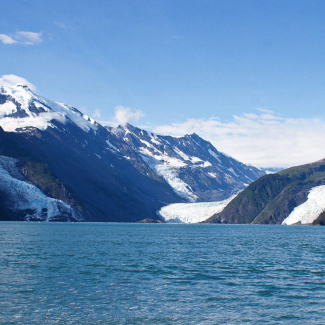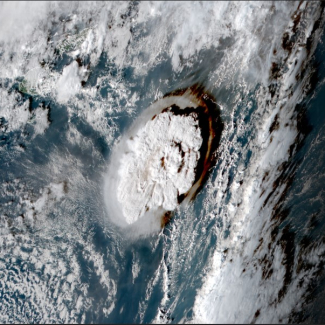Tsunamis are just long waves — really long waves. But what is a wave? Sound waves, radio waves, even “the wave” in a stadium all have something in common with the waves that move across oceans. It takes an external force to start a wave, like dropping a rock into a pond or waves blowing across the sea. In the case of tsunamis, the forces involved are large — and their effects can be correspondingly massive.
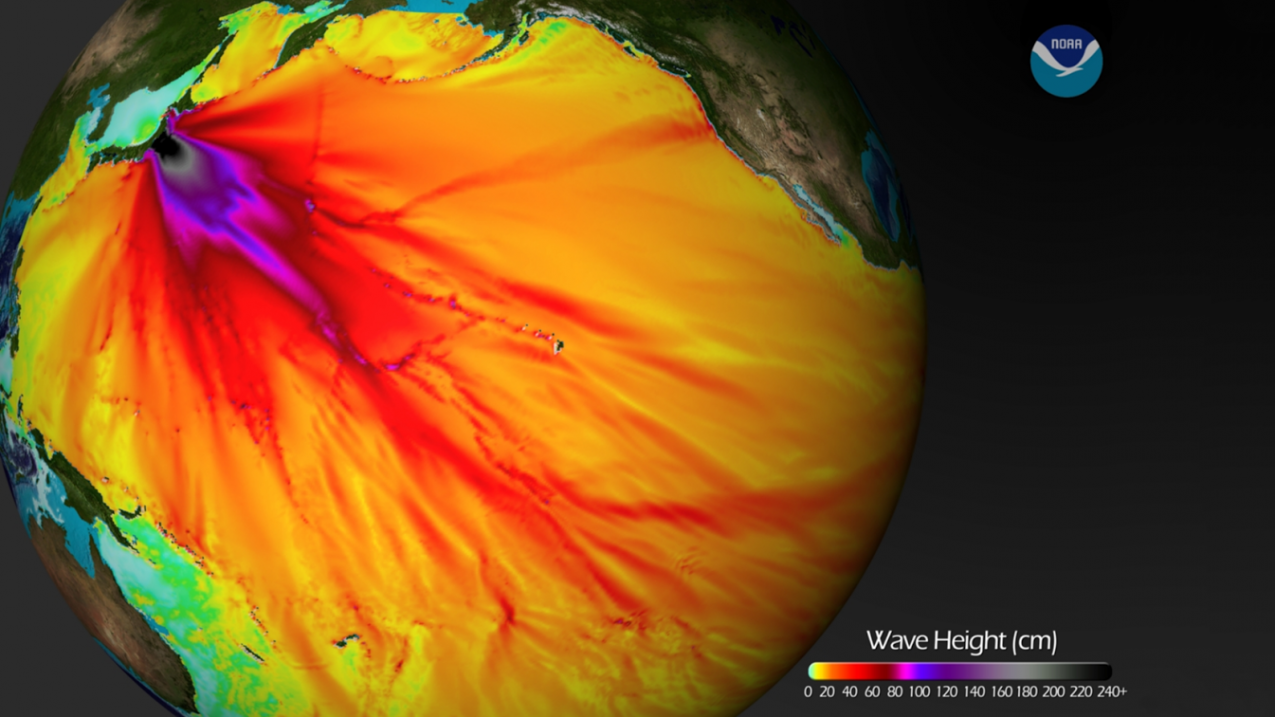
Expected tsunami wave heights from the March 2011 Honshu, Japan undersea earthquake. (Image credit: NOAA Center for Tsunami Research)
What is a tsunami?
A tsunami is a series of extremely long waves caused by a large and sudden displacement of the ocean, usually the result of an earthquake below or near the ocean floor. This force creates waves that radiate outward in all directions away from their source, sometimes crossing entire ocean basins. Unlike wind-driven waves, which only travel through the topmost layer of the ocean, tsunamis move through the entire water column, from the ocean floor to the ocean surface.
Imagine this: you are sitting on a beautiful beach enjoying a lovely day, when out of the blue an alarm blasts from your phone and reads “Tsunami warning.” Do you know where you would go and what to do? What if you aren’t in the U.S. and there are no alarms, would you know the signs of an approaching tsunami?
What causes tsunamis?
Most tsunamis are caused by earthquakes on converging tectonic plate boundaries. According to the Global Historical Tsunami Database, since 1900, over 80% of likely tsunamis were generated by earthquakes. However, tsunamis can also be caused by landslides, volcanic activity, certain types of weather, and—possibly—near-earth objects (e.g., asteroids, comets) colliding with or exploding above the ocean.
Tsunami movement
Once a tsunami forms, its speed depends on the depth of the ocean. In the deep ocean, a tsunami can move as fast as a jet plane, over 500 mph, and its wavelength, the distance from crest to crest, may be hundreds of miles. Mariners at sea will not normally notice a tsunami as it passes beneath them; in deep water, the top of the wave rarely reaches more than three feet higher than the ocean swell. NOAA Deep-ocean Assessment and Reporting of Tsunami (DART) systems, located in the deep ocean, are able to detect small changes in sea-level height and transmit this information to tsunami warning centers.
On the afternoon of April 13, 2018, a large wave of water surged across Lake Michigan and flooded the shores of the picturesque beach town of Ludington, Michigan, damaging homes and boat docks, and flooding intake pipes. Thanks to a local citizen’s photos and other data, NOAA scientists reconstructed the event in models and determined this was the first ever documented meteotsunami in the Great Lakes caused by an atmospheric inertia-gravity wave.
Tsunami safety
A tsunami only becomes hazardous when it approaches land. As a tsunami enters shallow water near coastal shorelines, it slows offsite link to 20 to 30 mph. The wavelength decreases, the height increases, and currents intensify.
Tsunami warnings come in different forms. There are official warnings issued by tsunami warning centers that are broadcast through local radio and television, wireless emergency alerts, NOAA Weather Radios, NOAA websites, and social media. They may also come through outdoor sirens, local officials, text message alerts, and telephone notifications. There may not be time to wait for an official warning, so it is important to be able to recognize natural tsunami warnings. These include strong or long earthquakes, a loud roar (like that of a train or an airplane) coming from the ocean, and a sudden rise or fall of the sea level that is not related to the tide. Official and natural warnings are equally important. Be prepared to respond immediately to any tsunami warnings. Move quickly to a safe place by following posted evacuation signs. If you do not see an evacuation route, go to high ground or as far inland as possible.
When they strike land, most tsunamis are less than 10 feet high, but in extreme cases, they can exceed 100 feet near their source. A tsunami may come onshore like a fast-rising flood or a wall of turbulent water, and a large tsunami can flood low-lying coastal areas more than a mile inland.
Rushing water from waves, floods, and rivers is incredibly powerful. Just six inches of fast-moving water can knock adults off their feet, and twelve inches can carry away a small car. Tsunamis can be particularly destructive because of their speed and volume. They are also dangerous as they return to the sea, carrying debris and people with them. The first wave in a tsunami may not be the last, the largest, or the most damaging. Stay out of the tsunami hazard zone until local officials tell you it is safe, as the danger may last for hours or days.
NOAA bathymetric data helps scientists more accurately model tsunami risk within Barry Arm
Tsunami effects on humans
Large tsunamis are significant threats to human health, property, infrastructure, resources, and economies. Effects can be long-lasting, and felt far beyond the coastline. Tsunamis typically cause the most severe damage and casualties near their source, where there is little time for warning. But large tsunamis can also reach distant shorelines, causing widespread damage. The 2004 Indian Ocean tsunami, for example, impacted 17 countries in Southeastern and Southern Asia and Eastern and Southern Africa.
Tsunami forecasting
Scientists cannot predict when and where the next tsunami will strike. But the tsunami warning centers know which earthquakes are likely to generate tsunamis and can issue messages when one is possible. They monitor networks of deep-ocean and coastal sea-level observation systems designed to detect tsunamis and use information from these networks to forecast coastal impacts and guide local decisions about evacuation. Tsunami warning capabilities have become dramatically better since the 2004 Indian Ocean tsunami. NOAA scientists are working to further improve warning center operations and to help communities be prepared to respond.
As Tonga’s Hunga Tonga-Hunga Ha'apai volcano began to erupt on January 15, 2022, it sent more than tsunami waves across the Pacific Ocean — some forms of communications in the region were sent into the dark, too. The eruption broke an underwater communications cable, leaving most of the island nation without internet access and other forms of communication.
EDUCATION CONNECTION
Students can investigate tsunamis to discover the impacts of Earth's systems on humans. Teachers can use these potentially deadly waves and other natural hazards to bring relevance to science concepts such as plate tectonics, acceleration and speed, force and motion, energy transfer, and the physics of waves. In addition, many schools, homes, and businesses are located in tsunami hazard zones offsite link. Many coastal states and territories have tsunami preparedness campaigns in place. Teaching students about tsunami safety and preparedness plans may ultimately save lives.


